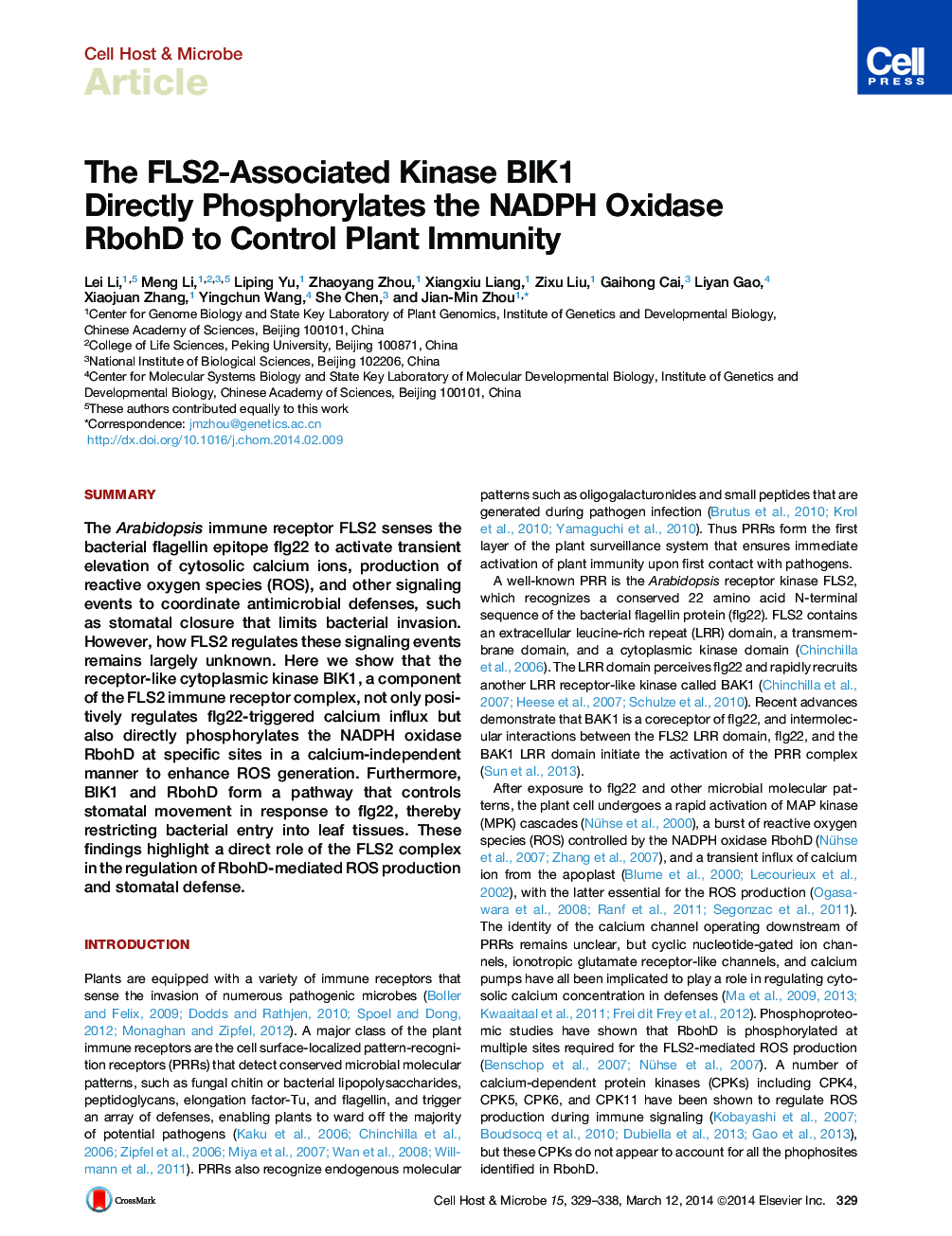| Article ID | Journal | Published Year | Pages | File Type |
|---|---|---|---|---|
| 4361077 | Cell Host & Microbe | 2014 | 10 Pages |
•The NADPH oxidase RbohD directly interacts with the FLS2 immune receptor complex•BIK1 directly phosphorylates RbohD at specific sites•BIK1 is required for flg22-induced stomatal closure•RbohD phosphorylation contributes to the BIK1-regulated stomatal defense
SummaryThe Arabidopsis immune receptor FLS2 senses the bacterial flagellin epitope flg22 to activate transient elevation of cytosolic calcium ions, production of reactive oxygen species (ROS), and other signaling events to coordinate antimicrobial defenses, such as stomatal closure that limits bacterial invasion. However, how FLS2 regulates these signaling events remains largely unknown. Here we show that the receptor-like cytoplasmic kinase BIK1, a component of the FLS2 immune receptor complex, not only positively regulates flg22-triggered calcium influx but also directly phosphorylates the NADPH oxidase RbohD at specific sites in a calcium-independent manner to enhance ROS generation. Furthermore, BIK1 and RbohD form a pathway that controls stomatal movement in response to flg22, thereby restricting bacterial entry into leaf tissues. These findings highlight a direct role of the FLS2 complex in the regulation of RbohD-mediated ROS production and stomatal defense.
Graphical AbstractFigure optionsDownload full-size imageDownload high-quality image (164 K)Download as PowerPoint slide
